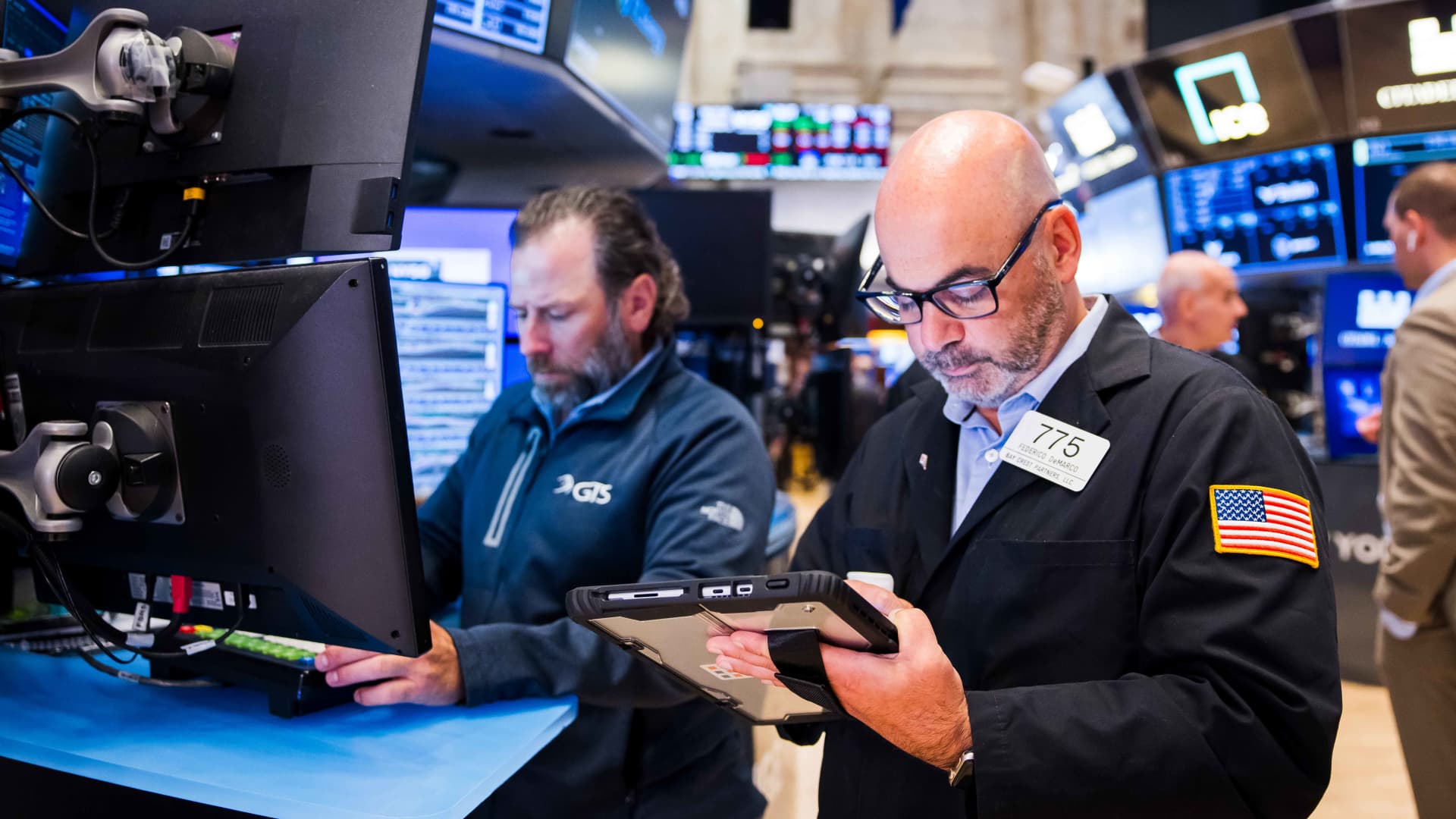Traders work on the floor of the New York Stock Exchange.
NYSE
Stock futures were little changed Tuesday night after the S&P 500 pulled back from record levels, snapping a three-day winning streak.
Futures tied to the Dow Jones Industrial Average edged up 18 points, or 0.04%. S&P futures were 0.06% higher, while Nasdaq 100 futures rose 0.09%.
In after-hours trading, shares of Micron Technology gained more than 2% on the back of better-than-expected earnings and a strong forecast. The artificial intelligence boom fueled a 46% increase in Micron revenue.
The leading memory chipmaker’s results follow a trading session that was dominated by heightened fears about the circular nature of the AI industry, sparked by a Nvidia-OpenAI partnership. Shares of leading AI players Nvidia and Oracle tumbled on Tuesday.
The S&P 500 closed in the red on Tuesday, down 0.6%, after it had reached a new all-time intraday high earlier in the session and posted a record close the previous day. The Nasdaq Composite fell nearly 1%, pulled down by a 2.8% loss in Nvidia shares just one day after the chipmaker announced a massive investment in OpenAI, which prompted questions about whether there is enough energy to power planned data centers and if Nvidia’s partnerships are akin to the risky practice of vendor financing.
Traders could also be profit-taking amid elevated market valuations, which Federal Reserve Chair Jerome Powell called out at a Tuesday press conference.
Wells Fargo chief equity strategist Ohsung Kwon remains bullish on the AI trade, anticipating that spending will continue to be robust. “I think this is a AI-led bull market, and I think this is likely to continue,” he said Tuesday on CNBC’s “Power Lunch.”
“First of all, it’s not a bubble,” Kwon continued. “The entire outperformance of the Nasdaq since the end of tech bubble has been driven by better fundamentals in the Nasdaq versus the S&P 500, and I think that’s likely to continue. Second, we still think we are in the early innings of the AI investment cycle. … I think the way this plays out is, as long as the equity market continues to reward companies’ capex outlook and the growth outlook, this is likely to continue.”





